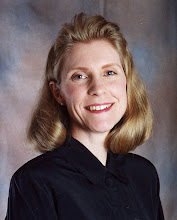
When I started doing research for this blog entry I made a big discovery. Bradford isn't a guy. It's a place, and a woolly place indeed.
You're shopping for wool. You happen to wander into my Etsy store. You see a listing for "64 ct. merino". What does that number mean? How is it different from microns? Who made this stuff up, anyway?
The Bradford Count system was developed in England as a way to grade wool. Some wool is coarse. It is good for carpets. It is also worth less per pound. Some wool is very, very soft. It is good for baby clothes. It is worth more.
The Bradford Count is a skilled estimation of the number of 560 yd. hanks of single-ply yarn that can be spun from a pound of clean, combed top. One pound of 64 ct. merino could be spun into 64 hanks or 35,840 yds. of yarn by a very skilled spinner. Higher number=finer wool=more yards per pound. Lower number=coarser wool=fewer yards per pound.
Here are some traditional Bradford Counts for sheep wool. Lincoln/36-40; Romney/44-48; Blue-Faced Leicester/56-60; Corriedale/46-62; Merino/60-80. The Bradford Count system was developed at a time when wool mill owners stuck their hands in the greasy wool, pulled out some staples, and offered a farmer a price for the whole clip. The number is arrived at by looking at a number of factors - crimp, breed of sheep, and lots of experience judging fleeces.
And, as for Bradford, it is a town in northern England that was at the center of the woollen mill industry during the 19th century. In 1800 Bradford had one woolen mill. By 1850 it had 129 mills and the Industrial Revolution was in full swing. Bradford was famous for its cheap, mass-produced worsted cloth, and was known appropriately as "worstedopolis."
Tomorrow, microns.
Information on the town of Bradford came from the book Employers and Labour in the English Textile Industries, 1850-1939, by J.A. Jowitt and A. McIvor.




Hmmm, I suppose I kind of understand this, but I don't think it makes sense. Can't you spin merino wool as a thicker yarn, and spin a coarse wool very thin, and end up with the same amount of skeins per pound? I never understood that part of it...
ReplyDeleteIf one pound of 64 ct. merino will spin 64 hanks of yarn - does that mean that the average hank is 560 yards? Is that unplied?
ReplyDeleteI'm so confused!
See why we needed microns??
ReplyDeleteA hank is a unit of measurement, like a mile. It is always 560 yds.
The Bradford count measures the number of hanks from a pound of clean top - the finest spinning possible, single ply. So yeah, you can make shorter, fatter merino yarn, but if you MAX the fiber, you can get more yards from merino than you can from Romney. Clear as mud?